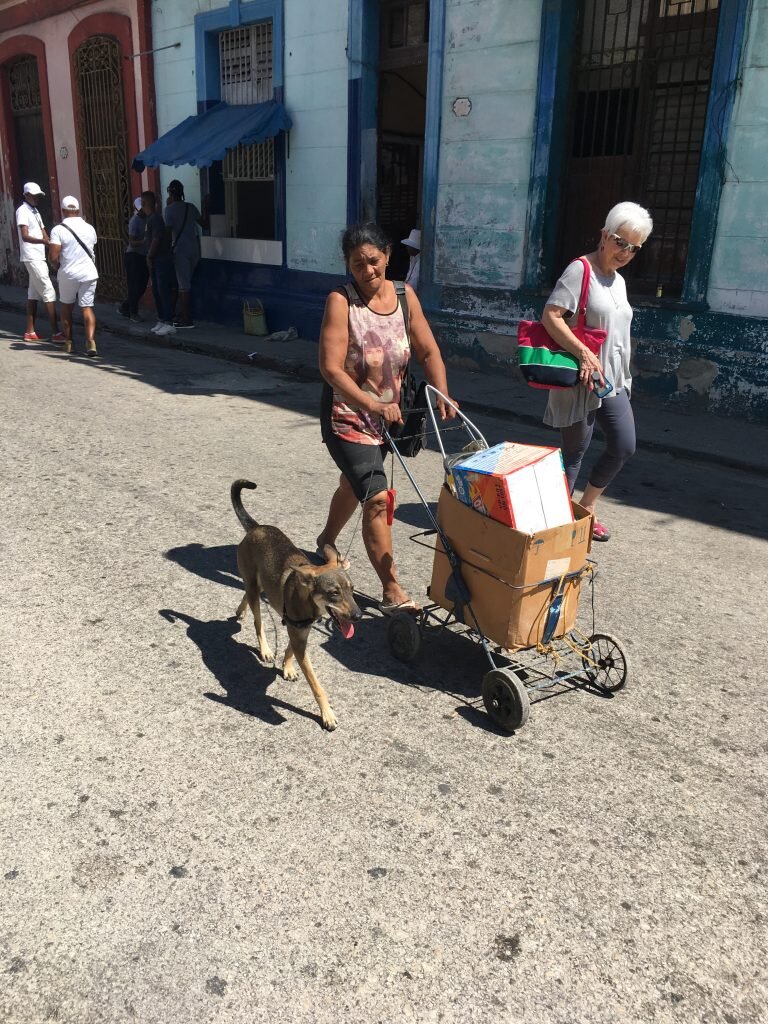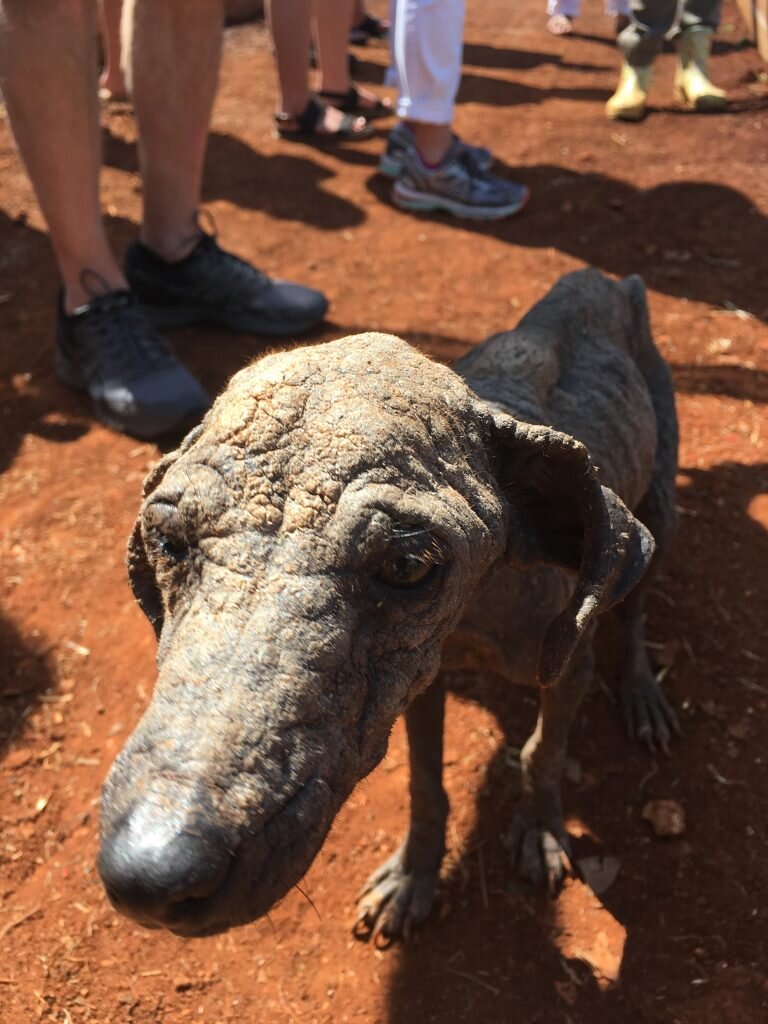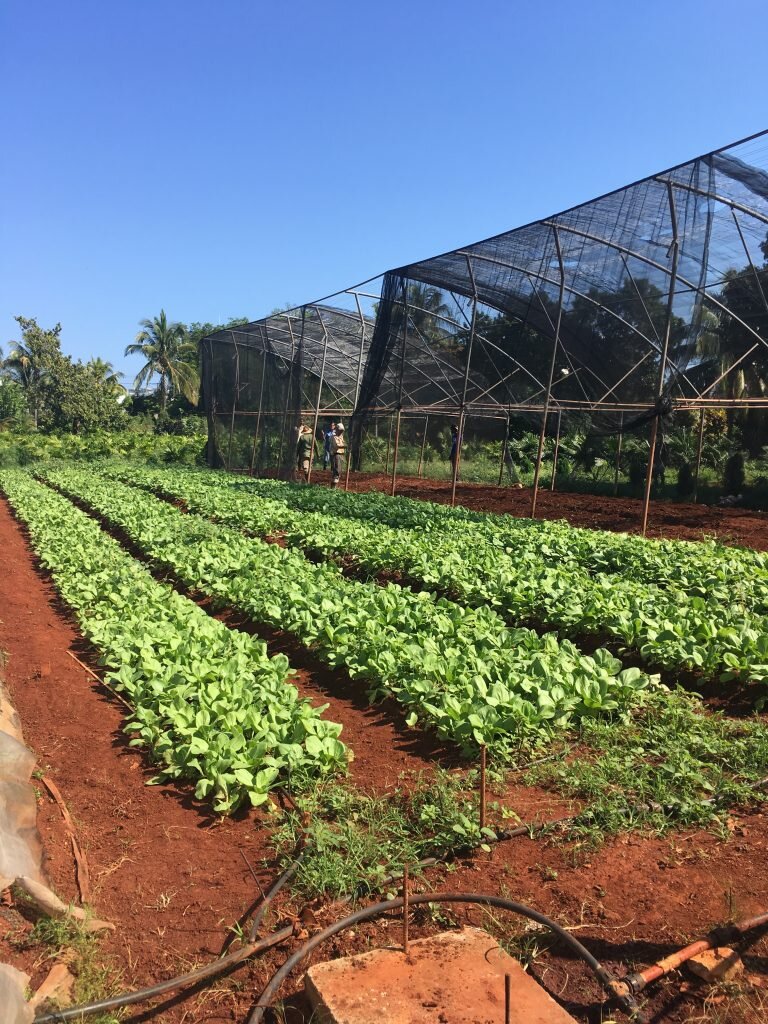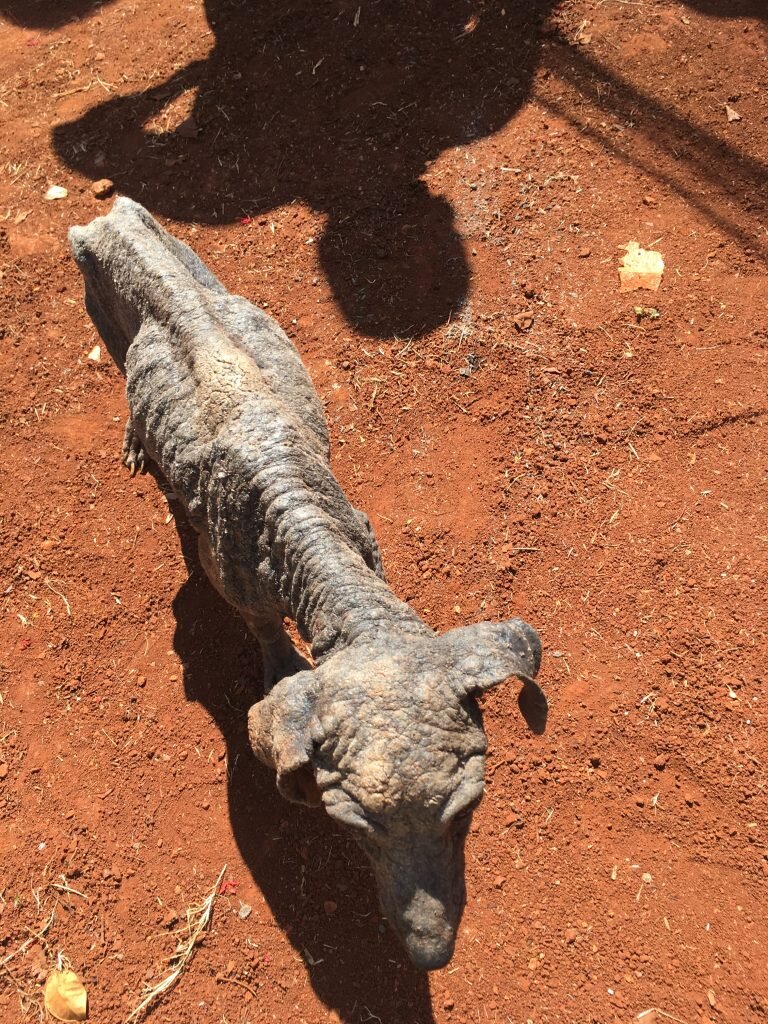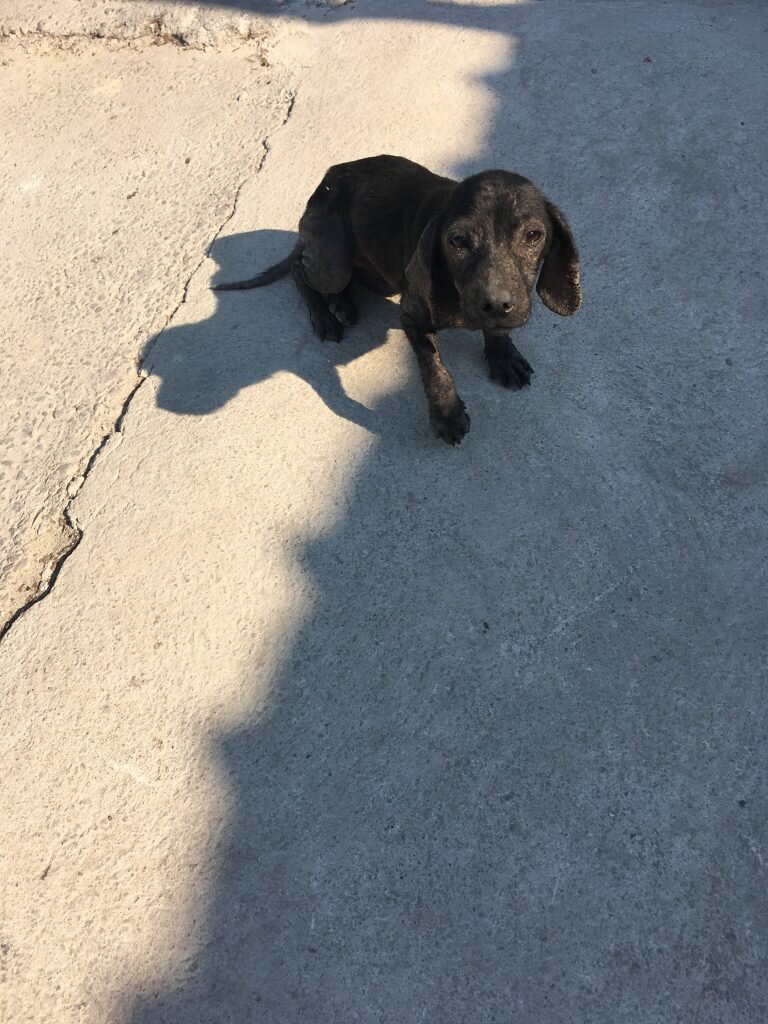Giving a Voice to the Dogs of Cuba
When my mother-in-law asked if I wanted to go to Cuba with her, I said why not? The Castro mystique, the old cars, and the architecture vaguely interested me. Visiting a communist society also intrigued me, but these were all ambiguous ideas floating around my mind. The only clear reason I could articulate for wanting to visit Cuba was the dogs.
I’ve been researching animal abuse and overpopulation in developing countries for years, but imagining and seeing are two different beasts. I wanted to see how a third-world economy affects dogs through the lens of my own experiences rescuing them in the rural south. That’s hard to explain to anyone who doesn’t understand the depth of an animal’s personality. After all, I knew what I was in for, right? In late February, I traveled to Havana for seven days with Kentucky Wesleyan College on an educational trip focusing on culture and art.
Convento de Belén
I saw my first Cuban dog on my first morning in Old Havana. I was standing on a cobblestone sidewalk outside the Convento de Belén, a center for the elderly, children, and the mentally ill. The government had restored the former church to its original beauty, painting it a pastel yellow, but if anything, the clean color made it stick out in stark contrast to its surroundings.
The buildings circling it were dilapidated, so dilapidated that gaping holes cut through walls and left nothing but exposed steel rebar and rubble. Windows were boarded shut or barred. I questioned how anyone could possibly live there, but they did. Laundry dried and swayed like colorful national flags on the third or fourth floor of these once elegant Spanish-style homes.
A dozen elderly women exercised in front of the center. The dog scooted past them without even pausing. He weaved around potholes, street vendors, and children dressed in school uniforms. The dog was white with brown spots, so it was easy to see his bright red collar and ID tag. His confidence and swagger were also easy to read.
When I asked Norberto, our translator and tour guide, about the dog, he explained the animal was part of a community program that adopts strays. During the day, the dogs roam the streets of Old Havana. At night, they guard museums and other important government buildings. Dog food doesn’t exist in Cuba, so local restaurants and cafes donate their scraps.
For the rest of that morning, I thought about Old Havana’s rescue program and hoped that everything I’d read was an exaggeration. Maybe there weren’t a lot of strays in Cuba. Maybe there weren’t an abundance of starving dogs. But, by day two, all my hopes were doused. I quickly realized the mutt with the red ID tag was a lot like the elderly center, one gleaming ray in a country overrun with poverty.
Cuba’s economic problems began before Castro’s revolution and the Bay of Pigs, but things really got bad when the Soviet Union collapsed in 1991. Cuba lost 80% of their imports virtually overnight. Cubans call this time the “Special Period,” and thirty years later they are still recovering.
This recovery added to a strict US embargo means Cubans don’t have access to resources we can buy anywhere. For people, it means medications, toilet paper, toilet seats, towels, sheets, and soap are luxuries not necessities. For dogs, it means no dog food, flea medication, heartworm preventative, medicated shampoo, or antibiotics.
Organopónico Vivero Alamar
Two days after visiting the elderly center, our group headed to Organopónico Vivero Alamar, an organic farming collective. The farm spreads for a small but efficient 22 acres inside the suburb of Alamar. It’s an immaculate, organized space with rows of lettuce, tomatoes, carrots, and medicinal herbs. I saw horses hauling wagons and farmhands cutting sugarcane or milling around thatched-roof huts. It was an idyllic scene, but like the Convento de Belén, the telltale signs of hardship surrounded it. Right outside the farm’s gate, trash lined the streets like some sort of apocalyptic wildflower, and Soviet-style apartments, gray and peeling, loomed above.
As my group started loading the bus, I lagged behind. Out of nowhere, as though she had been there all along, an emaciated dog appeared. She was maybe one year, but it was hard to tell. The dog was so thin that her ribcage and spine stuck out like a mountain range. She had a severe case of mange that left her bald and scabby. I peered around, amazed such a pathetic animal could simply appear without warning, and realized the Americans were the only people reacting.
The farmhands continued working without pausing. They acted as though they were accustomed to such sick dogs. I asked a woman who spoke a little English about the animal.
“We give food,” the lady said, then shrugged her shoulders.
It wasn’t a cruel shrug. It was a helpless shrug. It’s not that Cubans don’t want to help the dogs, it’s that they can’t. Their average salary is 30.00 a month. Even if the people could afford medical care, vets often can’t get the products needed to treat mange. It was the first but not the last time I got that same empathetic but helpless shrug.
For all her sickliness, the dog wasn’t afraid of humans. She approached us with hope, as though she might get a few morsels. At the exact time when my heart was about to explode, one of the college students in our group ended up on the dirt, shaking, pasty white, and throwing up. She had heat exhaustion. The dog disappeared in the confusion.
During the next few days, I sat on our bus, as we were whisked from one model social or art project to another, and tried not to think about that dog. I relied on a skill I had used when I fostered for ICHBA. Back then, I learned how to harden my heart, how to numb my emotions. If I couldn’t mentally accomplish that one essential act, then I could have ended up like so many others who help animals. They take care of so many that they can’t properly care for one. As of today, if my husband and I had kept every animal we’ve rescued in Robertson County, we’d have 50 dogs and a dozen cats living in our home.
The sheer number of dogs running loose in Havana also helped dull the Alamar mutt’s memory. Ninety-nine percent of the animals I saw weren’t leashed, so it was impossible to guess whether they had homes or not. The majority were bony, too thin. On average, I see one to two strays a month in Robertson County. In Cuba, I saw 40 dogs in one week.
Proyecto Muraleando
On one of our last stops, we visited the Proyecto Muraleando, a social project aimed at transforming an abandoned water tank into a center for art and music. Colorful murals and tile mosaics cover every inch of the tank and half the block.
An artist, thirty-ish with skin the color of almond milk, guided us through the studio and explained how the children in his community are turning trash into artwork. We walked through spaces that felt more like scenes from Charlie and the Chocolate Factory than reality. Sculptures made with irons, toilet bowls, and hubcaps stand on the floor or hang from the walls. Upstairs, we drank mojitos and listened to a band play Afro-Cuban music with claves and bongo drums.
The artist was saying goodbye to our group when I saw a puppy sleeping under a metal sculpture. He couldn’t have weighed more than ten pounds. Just like the dog at Alamar, he had mange but not as severe. He woke when he saw the artist and approached dragging his back paw.
The puppy crawled up into a noodle between the artist’s feet. He was so close that he could have rested his snout on the man’s toe. The artist acted just like the farmhands and behaved as though the dog was a normal part of the landscape. That was the second time I had to actively work on numbing my emotions because every instinct screamed to scoop up that puppy and take him home to Tennessee.
I turned away and saw an alley across the street that looked like a bomb had exploded in the middle of it. Three dogs, two black and one red, were scavenging through debris. One of them held his front paw up and gimped on three legs. Another was missing patches of fur. There was so many that needed help.
I couldn’t hold back and asked, “Does anyone do anything about the dogs?”
It took the artist longer than a moment to respond. My question seemed to surprise or maybe offend him. “Nobody hurts them. And the people feed them when they can,” he said. Then he shrugged.
And I knew exactly what that shrug meant. It meant they had a hard enough time taking care of the people, how could anyone expect them to take care of the dogs too. When I had first arrived, my goal was to learn how a third-world economy affects dogs. What I realized outside that colorful, joyous art center is that Cuba’s poverty affects the dogs the hardest because they are on the lowest rung of the socioeconomic ladder.
Trash can be turned into art. Even a chicken produces eggs, but dogs have no economic value, so they come last. For dogs on that island, it’s survival of the fittest. The ones who are genetically strong will live, and others, like the puppy underneath the statue won’t.
Two days later, I flew home and tried focusing on the things I loved about Cuba, like their Afro-Cuban music, organic farming methods, community art projects, and mojitos. Yet, I couldn’t completely think about any of it without seeing a backdrop of poverty on such a grand scale it overwhelmed these few gleaming rays. And I still can’t picture the dog with the red ID tag without remembering the one at Almar or the puppy at Muraleando. I’d been warned Cuba was a land of extremes, and I saw the evidence of it over and over.
I was able to deaden my emotions while I was in Cuba, but when I got home they were waiting. There was a lot of guilt and shame for seeing those dogs and leaving them behind. I also felt frustrated because animals are dying of starvation and infectious diseases 91 miles south of Miami. The resources they need are a short plane ride away, yet unattainable.
Then, I focused on what I can do and funneled all my frustration into writing this post. The idealist in me has always believed and always will believe that if more people know, then more will care. And with that empathy comes change. So, I’m giving a voice to the Alamar dog and the Muraleando puppy and to the 40 others I saw wandering the streets. I’m telling their stories with the hope that if enough people care, we can make a change.
P.S. In a few days, I’ll be posting a few practical ways we can all help dogs in Cuba.

